
Point to Paper – Norways most famous ghost once wrote a letter to a psychic priest
Written by Kjartan Skogly Kversøy and translation of Norwegian Gothic handwriting by Gina Dahl
In today’s post, I will move into the supernatural. I will both have fun and be serious. Again, some really old Norwegian letters have turned up. They have piqued my curiosity. The letters were once sent and received locally in what is now called the village of Sande and the city of Drammen. I systematically hunt for old letters. I think letters written by people that once lived in the same area as myself are particularly worth examining. The letters you will get to know today are unique. They are all over 200 years old. Several of the senders and recipients are well-known people locally. Two of them can be linked to mysterious events.
It has not been easy to read the letters. They are written in Norwegian Gothic handwriting. In recent years, I have been practicing reading this type of writing. I am getting better. Nevertheless, in this case as well, I needed help from Gina Dahl that works as a scholar at the University of Bergen. This was the best way to get the entire translation in place. Gothic handwriting was used in Norway until the end of the 19th century. When those who wrote the letters also had their own personal twist on the writing, the texts can often be very difficult to read. The world-renowned Norwegian author Henrik Ibsen, was an early critic of this Gothic handwriting. He revised his way of writing in 1867. He made this decision while writing his famous play Peer Gynt. Ibsen believed that handwriting should be easy to read. He chose to switch from Gothic handwriting to the modern and more reader-friendly cursive script .
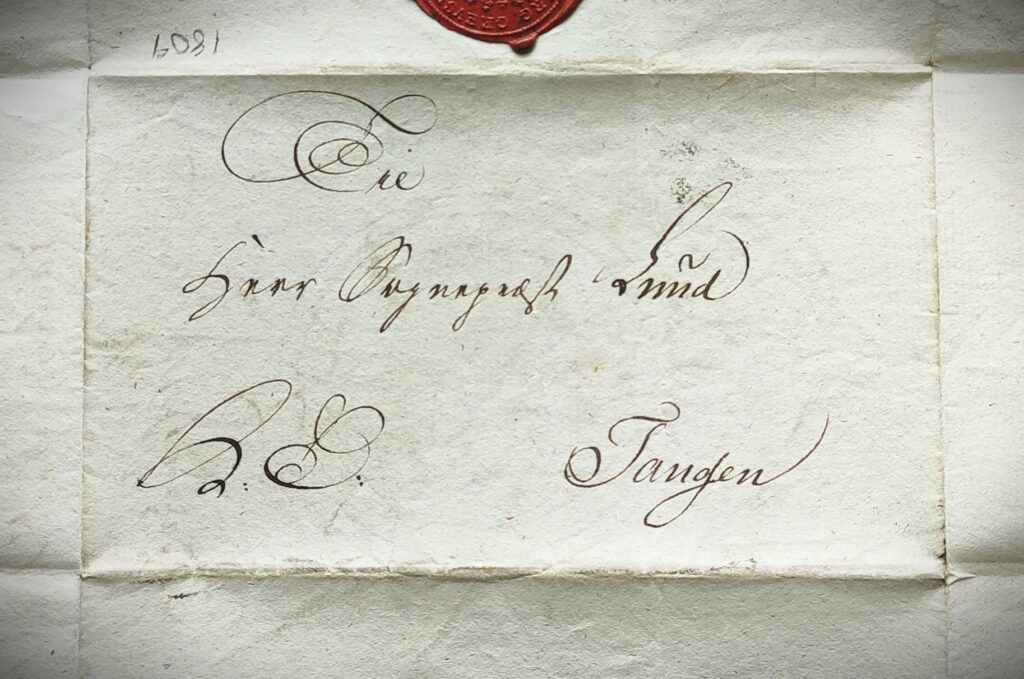
To get in the right mood, I thought we could to warm up with some supernatural speculation. Two of the letters I have examined this time were written respectively on the 18th of February 1809 and the 18th of May 1809. Can you see the same as me? The number 18 pops up four times in the two main letters. The 18th of May, the 18th of February, 18 09 and 18 09. If we add the last two digits of the year numbers (09+09), we even get 18 for the fifth time. I choose to go straight to the point and start by drawing inspiration from numerology .
For many that believe in numerology, the number 18 has strong symbolic value. Anyone who constantly experiences the number 18 should pay attention now. The number is associated with the angels wanting to communicate with you. Anyone who often comes across the number 18 is on the right track. The number shows that your next step will be protected. You will, according to this thinking, experience that your needs will be met. The number is charged with positive energy and is linked to success. You will experience new beginnings and abundance. Many occurrences of the number 18 are signs that you should continue on the path you have chosen. One of the writers of the letters we are examining today may have felt success in 1809, but just three years later some sources claim he was to be affected by a dramatic event. If the sources are correct, this event was to follow him for the rest of his life. Actually, if the mysterious stories from the rectory in Sande are true, he did not even find peace after death.
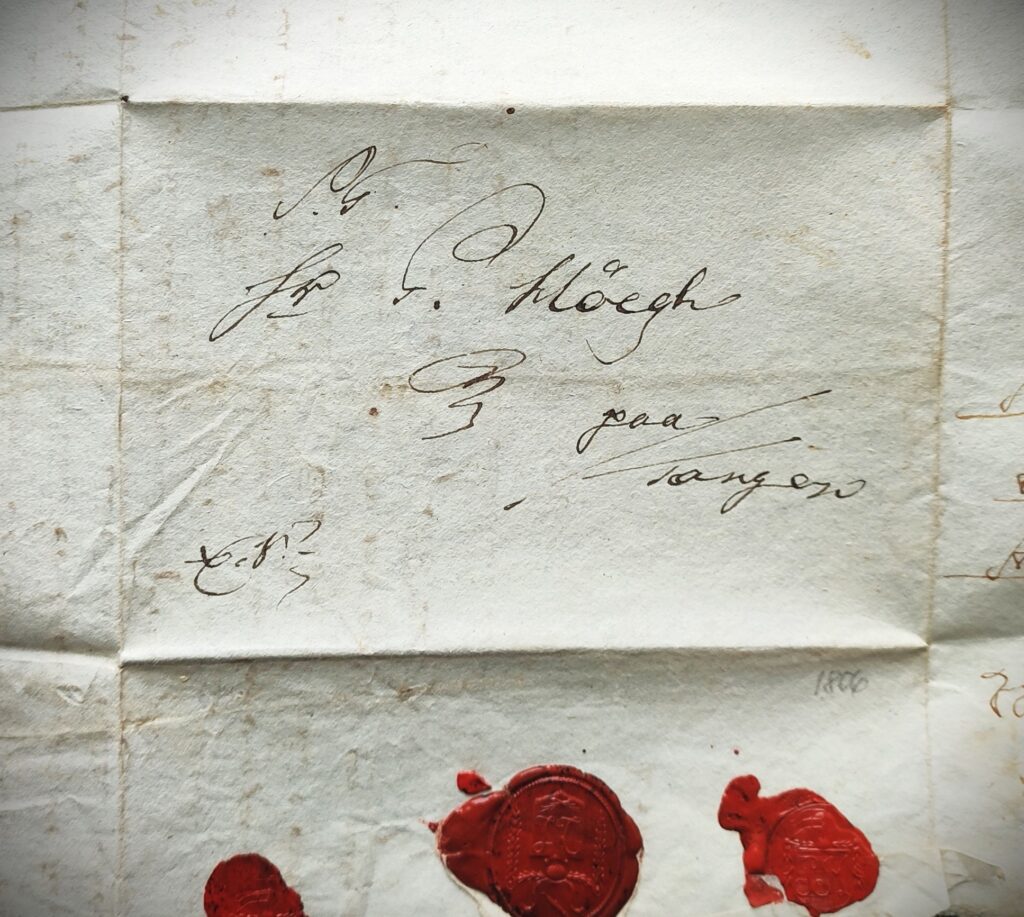
The main characters in the letters are linked to many rumors and stories. These are old stories. It is difficult to keep track of what is fact and what is fantasy. Sometimes several narratives and several different people are jumbled together. Of all the things I am writing about in this post today, it is the translation of the letters that can be trusted. The stories related to the people must be taken for what they are. They are stories about mysterious events that are associated with people that lived over 200 years ago. I’m just trying to reproduce what I’ve read and heard as best I can.
Over two centuries, a multitude of people have been telling these stories. The stories have since been told again and again by new storytellers. The storytellers have consciously or unconsciously added something and subtracted something. They have forgotten things, made stuff up, mixed things together and sometimes made a mess of it all. The stories are therefore not in any way hard facts. The stories are nevertheless worth exploring. I choose to be careful about meaning one way or the other when it comes to supernatural phenomena, but it is a fact that the people this post is about are often associated with unexplained events.
The first letter Gina Dahl and I translated was written by a parish priest who some believe became a ghost after his death. The ghost is often called The Brown-clad Man. The future ghost writes to a colleague. He is also a parish priest. It is claimed that this priest had psychic powers. On the day he died, he saw visions that turned out to be true. Witnesses from his deathbed could tell about this afterwards. In The Encyclopedia of Drammen (Drammen Byleksikon 2004), it is claimed that according to some rumours, this priest also had access to The Black Book (Cyprianus). I don’t know if this is true, but it was actually not uncommon for priests to have a copy of The Black Book. Most books of this kind that we know of in Norway are from after 1750. Most were made in the 19th century. In terms of time, the rumor does not seem entirely improbable. I don’t know much about this practice, but it seems that The Black Book could be used for good deeds if used wisely and could be dangerous if it got into the hands of the ignorant or people with evil intentions.
The second letter is from the same psychic parish priest to a person called Mr. G. Høegh. I am not sure who this person was, but the letter is addressed to an area called Tangen. Tangen is now within the city limits of Drammen. It would be interesting to get input if any of the readers know who this man was. You will learn more about the content of the letter later. It seems that Mr. Høegh was literate and was some kind of authority figure associated with the local parish church of Tangen. In the letter there is talk, among other things, about payment related to a funeral.
The third letter is from the ruling Count of the area called Jarlsberg County. This area covers all the places mentioned in all the three letters. This Count was an active nobelman that was involved in a lot of different things. The letter is a reminder that someone owes something. I think it has something to do with barley grains. It seems that someone owes 40 barrels of barley to someone and that this has been reduced to 35 barrels. This letter is included primarily because it has helped me to confirm the identity of the psychic parish priest. Here the lacquer seals of the parish priest have also been an important indentifier.
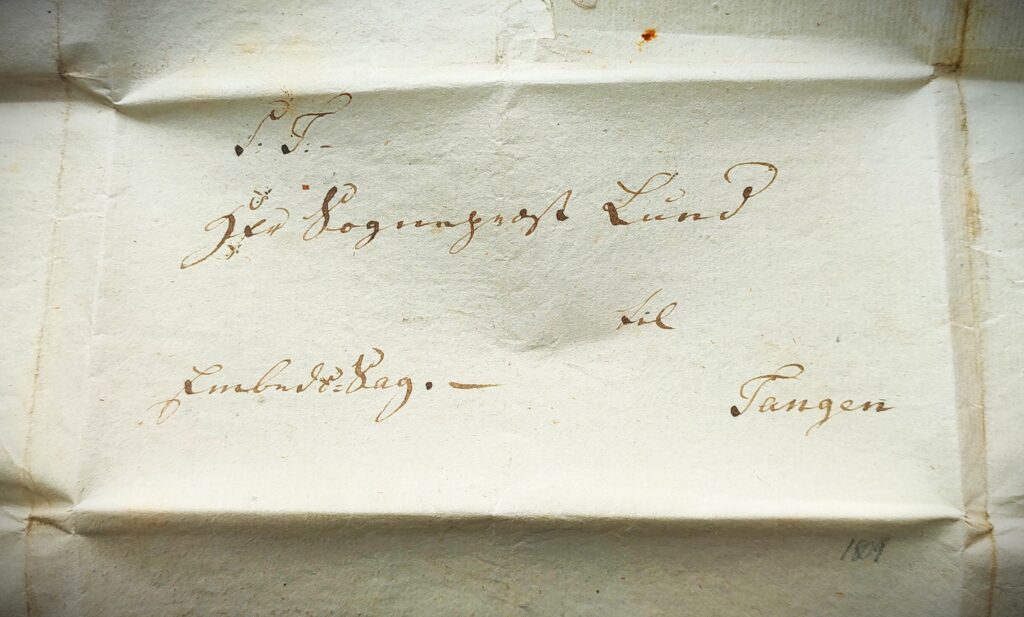
Have you heard the story about The Brown-clad Man that haunts the rectory in Sande? Some claim he is the parish priest Hans Daniel Hammer (1748-1812). The father of The Brown-clad Man was called The Black Hammer. His name was Christopher Paul Hammer (1718-1793). He was also a priest in the same parish before his son took over. One version of the story is that in 1812 the parish priest Hans Daniel Hammer refused to approve the confirmation of a local boy. Some claim that it was because the boy came to church without shoes. Others claim that it was because he did not bring a gift to the priest. Some say that the boy was simply unable to answer the questions the priest asked him. At that time, it was possible to fail your confirmation.

At the time it was very important that your confirmation was approved by the priest. Passing the confirmation examination was necessary both to be able to enlist for military service, to testify in court, to own land and be able to get married. It was a very serious matter not to pass. The boy who did not pass was devastated. In desperation, he chose to drown himself in the Sande river. If the story is correct, the suicide was more than the parish priest Hans Daniel Hammer could bear. He got no peace of mind, heart or sole for the rest of his life. Even after his death, he continued to wander restlessly about the rectory.
The most common version of the story is that this incident was the direct reason for the parish priest turning into a restless ghost. In a YouTube video (just follow the link), we are told that several sceptics have experienced strange things at the rectory in Sande. These sceptics have reluctantly admitted that inexplicable things frequently happen there. One of the skeptics was a university professor. After he had spent the night at the rectory, he later admitted that things had happened during the night that he could not explain.
One of the people that has attempted to systematically map the stories connected to The Brown-clad Man is the leader of the Sande Historical Society, Ingar Haugerud. He challenges the most famous myths about The Brown-clad Man. He can confirm the claimed presence of several ghosts in the rectory, but he does not think the ghost is the parish priest Hans Daniel Hammer. He writes in a comment on Facebook on the 20th of April 2024 (my translation to English):
Who is The Brown-clad Man? There are good records of who passed and who did not pass their confirmation examination. Hans Daniel Hammer never failed any confirmation candidates during his time as a priest. In contrast, his father rejected 84. Of those, there was one boy that died one year after he was supposed to have passed his confirmation. The cause of death is unknown. The Brown-clad Man was firstly mentioned by the parish priest Andreas Munch. He lived in the rectory from 1812-1818. The story of the alleged suicide first appeared in the Norwegian newspaper Morgenbladet in 1921. Incidentally, it was the priest Hans Lødrup who saw and described best what The Brown-clad Man looked like. He is said to have pointed him out from pictures of the priests hanging in the rectory in Sande. He could not have pointed to a the picture of Hans Daniel Hammer as no known pictures of him have ever existed.
I do not claim that the rumors or the stories of the supernatural events are true, but I have to accept that there are a multitude of ways of interpreting reality. I also accept that things happen all the time that I don’t fully understand. I have to try to take seriously that these stories are about something. That should not be underestimated. I believe, like the German philosopher Hans-Georg Gadamer, that when I am trying to understand something, it is wise to face even what I find strange with an attitude of wonder and open-mindedness. The questions of wondering wisely may be: What is this story trying to tell me? What does this mean? Why does such a reputation exist? Gadamer warns against getting trapped by one’s own prejudiced interpretations. Someone who also warns us in a similar way is the American educator and philosopher John Dewey. He writes that a stubborn and closed mind is comparable to a brain made of wood. With a hospitality of mind, I will do my best to interpret with caution and charity.
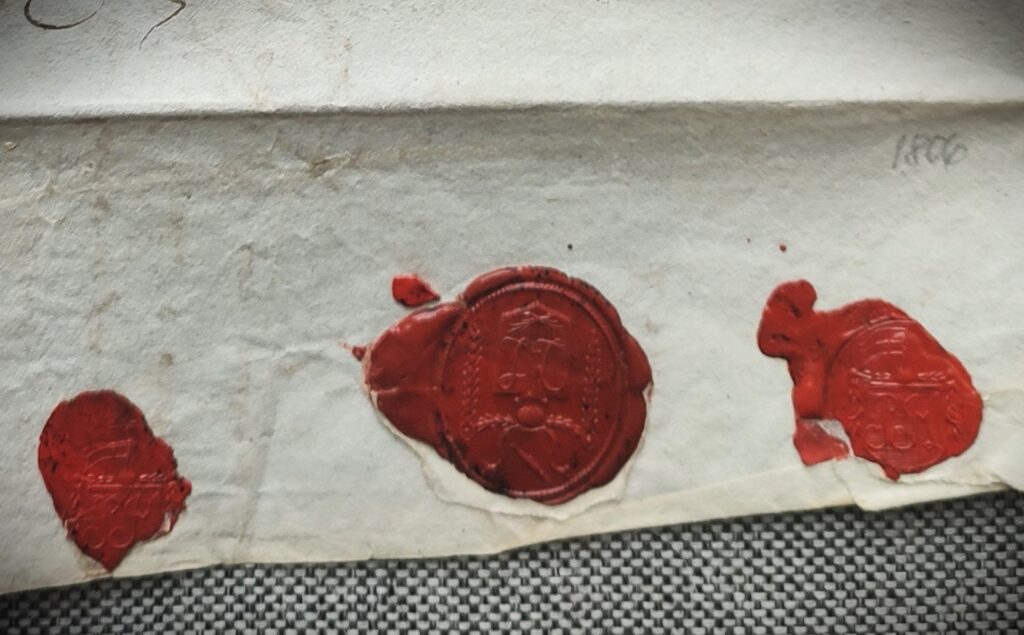
One of the other main characters in the letter, is the parish priest Andreas Jacob Lund (1771-1842). I have written about him previously. You can read more about it in this story (here, by the way, there are two more instances of the number 18): Why did the Parish Priest Lund send a letter from Tangen on Tuesday the 18th of October 1808 to the County Physicist Arbo and City Surgeon Lundt at Bragernes? Lund was born in Copenhagen. He was the son of a merchant that sold supplies to sailors and soldiers. Lund’s father sold supplies that required some form of refrigeration. This type of mercant preferred to locate his shop in a cool basement.
Lund was a priest in the parish of Skoger and Tangen for over 40 years (1802-1842). He was known as a skilled administrator. He was keen on doing something about the hard challenges that faced the poor in his parish. As an example, Lund is mentioned in a case were he is giving a written defense in favor of the impoverished mother Goran Salvesen. Goran was the wife of captain Bent Salvesen. She had problems supporting herself and her children. Her brother-in-law Anders Juel asks Lund for a recommendation. He wants to start a small grocery shop in order to be able to support his sister-in-law Goran and her children. The husband, captain Bent Salvesen, who, among other things, was captain during the Napoleonic Wars on the privateer ship Recovery from 1813-1814, had left his wife and children in favor of adventures in the East Indies. The parish priest Lund writes (translated to English):
Goran Cathrine Salvesen has always excelled in her domesticity, diligence and her care for her children’s upbringing. A rare and completely unforgivable indifference to her, her children’s and her home’s well-being, on the other hand, has always distinguished the man, captain Bent Salvesen. As he has shown himself absent until now, she has no reason to hope or expect any contribution to her and her children’s entertainment. She herself must therefore take care of herself.
As you will see in the letters, the two parish priests discuss the situation of the poor. Parish priest Lund and parish priest Hammer seem to have had a social conscience. Parish Priest Lund is referred to in the Encyclopedia of Drammen as someone who zealously worked for the cause of the poor. The first letter we have translated is about a fund for the poor at Tangen. This discussion takes place 33 years before The Poor Welfare Act was passed in 1845. In the letter, Hammer seems to point out that Jarlsberg Works (mining and metal works in the county of Jarlsberg) already has some obligations towards the poor in accordance with an agreement from 1776.
Here follows a translation of the three letters
The first letter is from the parish priest Hans Daniel Hammer to parish priest Andreas Jacob Lund (translated to English from 19th century Norwegian):
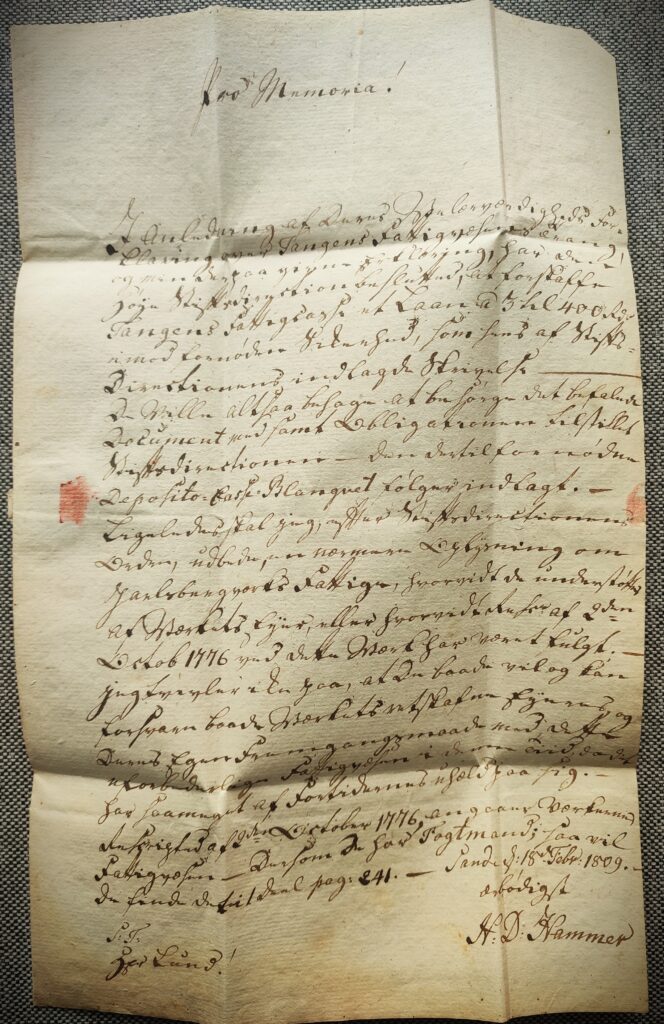
Pro Memoria!
On the occasion of your Excellency’s explanation of the Fund for the poor of Tangen, and my declaration, the Diocese Directorate has decided to provide the Fund for the poor of Tangen with a loan of 300 to 400 Rigsdaler Specie against the necessary security, which can be seen from the letter submitted by the Diocese Directorate. Please provide the ordered Document with Bonds to the Diocese Directorate. The requisite Blanquet [form] follow entered Likewise, according to the Diocese Directorate’s Order, I shall request more information about Jarlsberg Works poor, whether they are supported by the Works owner, or whether the Register of the 2nd of October 1776 by this Works has been followed. I have no doubt that you both want and can defend both the Works righteous opinions and your own way of proceeding with this incorrigible poor being in this time, as it has a share of the misfortunes of the past on it. Rescripted of the 2nd of October 1776, concerning the Fund of the Poor connected to the Works. If you have a Bailiff; so you will find then Part page [?] 241. Sande the 18th of February 1809 Most Respectfully Yours H.D. Hammer
To: Mr. Lund
The second letter is from the parish priest Lund to Mr. G. Høegh (I do not know who this is and I am happy for any tips from the readers). This is a reply to Mr. Høegh that Madam Bache, who seems to be one of the owners of Kobbervigen, is presumably entitled to a free burial at Tangen cemetery. It seems that the parish priest writes the answer in a cheerful tone. He writes that Mr. Høegh should just get on with the digging and they will figure it out at the next meeting. Should it turn out that they are at a loss in this case, it seems that the parish priest believes that the church can handle it (translated to English from 19th century Norwegian):
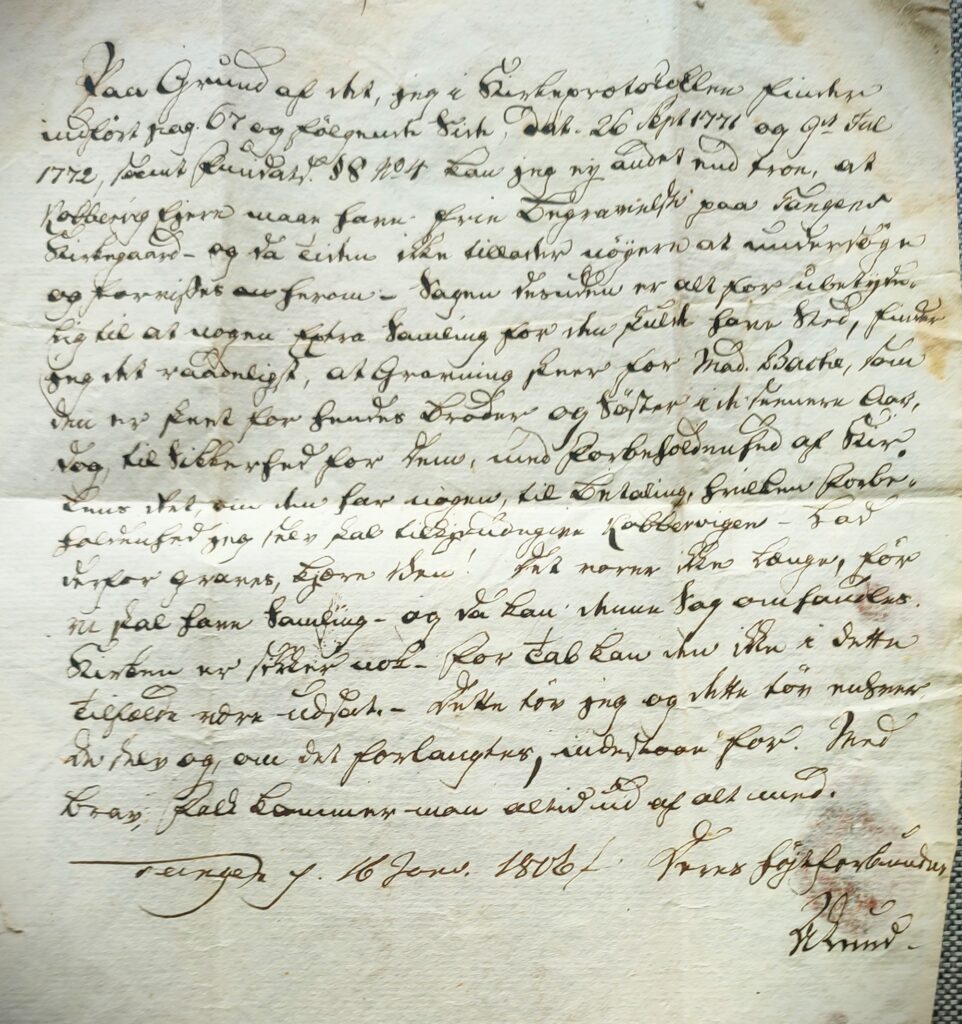
Because of that, I find in the Church protocol entered at page 67 and the following page, dated the 26th of September 1776 and the 9th of July 1772, as well as what can be found in §8 No 4, I can only believe that the owners of Kobbervigen must have the right to free Burials at Tangens Cemetery – and as Time does not permit a more careful investigation and confirmation of this – the matter is also far too insignificant for any extra meeting in full to take place, I find it advisable that digging takes place for Madam Bache, as it has been done for her brother and sister in the later years, however, for your security, with the reservation of the Church’s right, if there is any payment due, which reservation I myself will express to the owners of Kobbervigen – Let there therefore be digging, dear Friend! It won’t be long before we have a meeting, and then this matter can be dealt with. The church is safe enough – for Tab, it cannot be done in this case. This I dare and therefor You also can, if required, stand for. With Brave People you always get out of everything. Tangen the 16th of January 1806 Your Closely Connected Friend A. Lund
To Mr. G. Høegh
The last letter is from Count Wedel-Jarlsberg to parish priest Lund. I don’t know what the letter means exactly, but this letter helped me confirm that it was indeed parish priest Andreas Jacob Lund who was mentioned in the previous letters. It is a reminder that someone owes someone 35 barrels of barley and that the parish priest is involved in the case in one way or another (translated to English from 19th century Norwegian):

Promemoria
I am under the necessity of having to reduce the amount of barley from 40 barrels to 35 barrels that you were assigned under the 12th in this month, in relation to which the Equation had to be corrected.
Jarlsberg on 18 May 1809
Count Wedel-Jarlsberg
To Mr Parish Priest Lund
References
Per Otto Borgen (2004). Drammen Byleksikon (Encyclopedia of the City of Drammen). Forlaget for By-og bygdehistorie (Publishing House for Urban and Rural History).
Hans-Georg Gadamer(1989). Truth and Method. Sheed & Ward
John Dewey (1985). Democracy and Education. Southern University Press
All other references can be found in blue text. The blue text is also a direct link.
Photo
All photos were taken by Kjartan Skogly Kversøy.
2 thoughts on “Point to Paper – Norways most famous ghost once wrote a letter to a psychic priest”
How very interresting…my Grimsrud ancestors lived in both Sande & Skoger!
Hi Dee,
What were your Norwegian grandparents or great grandparents names? Maybe I can find a connection for you. I was in Skoger today on my bicycle. I live near by. Best regards Kjartan Skogly Kversøy